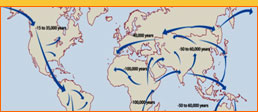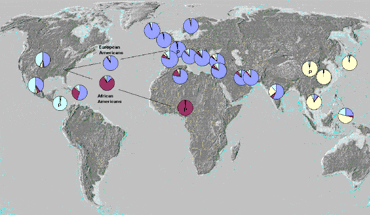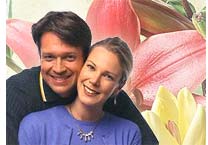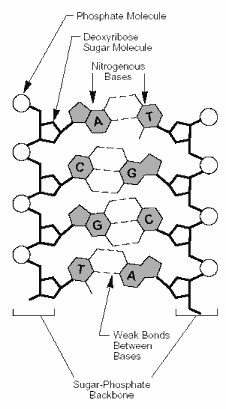Olive Oil Has Life Giving Benefits
Health Benefits of Adding Olive Oil to Your Diet
Learn the significant health benefits of incorporating olive oil into your diet!



Olive oil has been described as the "Mediterranean Miracle". This impressive title is based on the finding of numerous studies that have confirmed that a diet containing olive oil offers many health benefits. Olive oil, for instance, plays an important role in the prevention of several life-threatening diseases. People who live around the Mediterranean Sea, where olive oil is major constituent of their daily diet, have much lower death rates from heart disease and certain cancers. Interestingly, this is particularly true of the native Greeks from the island of Crete. Cretans are reputed to drink olive oil (on its own!), as well as incorporate it into their daily diet.
It is significant that those who eat a Mediterranean diet, actually eat as much fat as people from other countries. The important difference is that the former get their "fat" calories primarily from olive oil, which is largely composed of monounsaturated fat. The major advantage of monounsaturated fat is that it can lower blood cholesterol, without reducing the health giving properties of HDL, good-type cholesterol.
So, what are the main benefits of adding olive oil to your diet?
Olive oil reduces cholesterol:
A study conducted in the Netherlands concluded that a high-fat olive oil diet was far superior to an ordinary low fat diet in controlling levels of cholesterol. A group of forty- eight healthy adults was divided into two. Under strictly controlled conditions, half the group ate a diet high in fibre and low in fat (i.e. only 22% of calories from fat). The other half of the group ate a high fat diet where 41% of the calories came from fat and most of that fat came from olive oil. The cholesterol of the olive oil group was reduced by twenty points, whereas the control group saw only a reduction of an average seventeen points. In addition, the good-type HDL cholesterol, which helps prevent heart disease, was reduced to worrying levels in the low fat group, but was not affected in the olive oil diet group.
Olive oil lowers blood pressure:
Widespread studies have shown that consumption of olive oil can lower both systolic and diastolic blood pressure. Tests have concluded that, as little as three fluid ounces a day can significantly lower blood pressure. Olive oil can even lower the blood pressure of those people eating a high fat diet (high fat being defined as forty percent of calories coming from fat).
Olive oil regulates the body's blood sugar levels:
Studies have concluded that olive oil can markedly lower blood glucose levels. Tests have proved that even diabetes suffers who switch from a high carbohydrate and low fat diet to a high fat (fifty percent of calories from fat), with most of that fat coming from olive oil, can lower their blood sugar levels to such a degree that they require less insulin.
Olive oil is a powerful antioxidant:
Olive oil has antioxidant characteristics that help inhibit the process that produces LDL (the bad-type cholesterol). This may go some way towards explaining why olive oil is so good at preventing heart attacks. Olive oil's antioxidant capabilities can also play a part in inhibiting the development of cancer and many other diseases. It can even help slow down the ageing process.
The benefits of incorporating olive oil into one's daily diet cannot be over-stated. It is wise to use olive oil as a substitute for animal fats, such as butter and lard, wherever possible.
Dr. Duke's
Phytochemical and Ethnobotanical Databases
Chemicals in: Olea europaea subsp. europaea (Oleaceae) -- Olive
--------------------------------------------------------------------------------
Chemicals
(+)-CYCLO-OLIVIL Branches: DUKE1992A
1-CAFFEYL-GLUCOSE Fruit: DUKE1992A
3,4-DIHYDROXYPHENYLETHANOL-4-DIGLUCOSIDE Fruit: DUKE1992A
3,4-DIHYDROXYPHENYLETHANOL-4-MONOGLUCOSIDE Fruit: DUKE1992A
3,4-DIHYDROXYPHENYLETHYLALCOHOL Fruit: DUKE1992A
ALPHA-TOCOPHEROL Oil 119 ppm; DUKE1992A
APIGENIN Leaf: DUKE1992A
APIGENIN-7-DI-O-XYLOSIDE Leaf: DUKE1992A
APIGENIN-7-GLUCOSIDE Leaf: DUKE1992A
ARABINOSE Fruit: DUKE1992A
ARACHIDIC-ACID Fruit 300 - 800 ppm DUKE1992A
ASH Fruit 64,000 - 294,000 ppm DUKE1992A Leaf 61,000 ppm; DUKE1992A Twig 85,000 ppm; DUKE1992A
BETA-AMYRIN Leaf: DUKE1992A
BETA-CAROTENE Fruit 1.8 - 8.3 ppm DUKE1992A
BETA-SITOSTEROL-GLUCOSIDE Leaf: DUKE1992A
BORON Fruit 1 - 4 ppm DUKE1992A
CAFFEIC-ACID Fruit: DUKE1992A
CALCIUM Fruit 610 - 2,798 ppm DUKE1992A Leaf 11,800 ppm; DUKE1992A
CARBOHYDRATES Fruit 13,000 - 60,000 ppm DUKE1992A Leaf 735,000 ppm; DUKE1992A Twig 765,000 ppm; DUKE1992A
CATECHIN Fruit: DUKE1992A
CATECHOL-MELANIN Fruit: DUKE1992A
CHOLINE Leaf: DUKE1992A
CHRYSOERIOL-7-O-GLUCOSIDE Leaf: DUKE1992A
CINCHONIDINE Leaf: DUKE1992A
CINCHONINE Leaf: DUKE1992A
CRATAEGOLIC-ACID Fruit: DUKE1992A
CYANIDIN-3-GLUCOSIDE Fruit: DUKE1992A
CYANIDIN-3-MONOGLUCOSIDE Pericarp: DUKE1992A
CYANIDIN-3-RHAMNOSYLGLUCOSYLGLUCOSIDE Fruit: DUKE1992A
CYANIDIN-3-RUTINOSIDE Fruit: DUKE1992A
D-1-ACETOXPINORESINOL-4"-O-METHYL-ETHER Stem: DUKE1992A
D-1-ACETOXPINORESINOL-4'-BETA-D-GLUCOSIDE Stem: DUKE1992A
D-1-HYDROXYPINORESINOL Stem: DUKE1992A
D-1-HYDROXYPINORESINOL-4"-O-METHYL-ETHER Stem: DUKE1992A
D-ACETOXPINORESINOL Stem: DUKE1992A
DEMETHYLOLEOEUROPEIN Leaf: DUKE1992A
DIHYDROCINCHONINE Leaf: DUKE1992A
DIHYDROXYPHENYLPROPANE Leaf: DUKE1992A
ELENOLIDE Fruit: DUKE1992A
ERYTHRODIOL Pericarp: DUKE1992A
ESCULETIN Stem: DUKE1992A
ESCULIN Stem: DUKE1992A
ESTRONE Seed: DUKE1992A
FAT Fruit 127,000 - 583,000 ppm DUKE1992A Leaf 73,000 ppm; DUKE1992A Seed 300,000 ppm; DUKE1992A Twig 61,000 ppm; DUKE1992A
FIBER Fruit 13,000 - 60,000 ppm DUKE1992A Leaf 177,000 ppm; DUKE1992A Twig 289,000 ppm; DUKE1992A
FRUCTOSE Fruit: DUKE1992A
GALACTOSE Fruit: DUKE1992A
GALACTURONIC-ACID Fruit: DUKE1992A
GAMMA-TOCOPHEROL Oil 13 ppm; DUKE1992A
GLUCOSE Fruit: DUKE1992A
IRON Fruit 16 - 73 ppm DUKE1992A
KAEMPFEROL Stem: DUKE1992A
KILOCALORIES Fruit 1,160 - 5,320 /kg DUKE1992A
L-OLIVIL Resin, Exudate, Sap: DUKE1992A
LIGUSTROLIDE Fruit: DUKE1992A
LINOLEIC-ACID Fruit 10,500 - 28,000 ppm DUKE1992A
LUTEOLIN Leaf: DUKE1992A
LUTEOLIN-4'-O-GLUCOSIDE Leaf: DUKE1992A
LUTEOLIN-5-O-GLUCOSIDE Fruit: DUKE1992A
LUTEOLIN-7-O-GLUCOSIDE Leaf: DUKE1992A
LUTEOLINTETRAGLUCOSIDE Leaf: DUKE1992A
MANNITOL Leaf: DUKE1992A
MASLINIC-ACID Petiole: DUKE1992A
METHYL-DELTA-MASLINATE Leaf: DUKE1992A
MYRISTIC-ACID Fruit 300 - 800 ppm DUKE1992A
OLEANOLIC-ACID Petiole: DUKE1992A
OLEIC-ACID Fruit 122,400 - 326,400 ppm DUKE1992A
OLEOSIDE Leaf: DUKE1992A
OLEOSIDE-7-METHYL-ESTER Bark: DUKE1992A
OLEUROPEIC-ACID Root Bark: DUKE1992A
OLEUROPEIN Plant: DUKE1992A
OLIVIN Leaf: DUKE1992A
OLIVIN-4'-DIGLUCOSIDE Leaf: DUKE1992A
P-COUMARIC-ACID Fruit: DUKE1992A
PAEONIDIN-3-GLUCOSIDE Fruit: DUKE1992A
PAEONIDIN-3-RHAMNOSYLGLUCOSYLGLUCOSIDE Fruit: DUKE1992A
PALMITIC-ACID Fruit 14,250 - 38,000 ppm DUKE1992A
PECTIN Fruit: DUKE1992A
PHOSPHORUS Fruit 170 - 780 ppm DUKE1992A Leaf 900 ppm; DUKE1992A
POTASSIUM Fruit 550 - 2,523 ppm DUKE1992A
PROTEIN Fruit 14,000 - 64,000 ppm DUKE1992A Leaf 131,000 ppm; DUKE1992A Twig 89,000 ppm; DUKE1992A
PROTOCATECHUIC-ACID Fruit: DUKE1992A
QUERCETIN Stem: DUKE1992A
QUERCETIN-3-0-RUTINOSIDE Pericarp: DUKE1992A
QUERCETIN-3-O-RHAMNOSIDE Pericarp: DUKE1992A
QUINONE Fruit: DUKE1992A
RHAMNOSE Fruit: DUKE1992A
RUTIN Pericarp: DUKE1992A
SODIUM Fruit 24,000 - 110,092 ppm DUKE1992A
SQUALENE Fruit: DUKE1992A
STEARIC-ACID Fruit 2,100 - 5,600 ppm DUKE1992A
TANNINS Leaf: DUKE1992A
UVAOL Pericarp: DUKE1992A
VERBASCOSIDE Fruit: DUKE1992A
WATER Fruit 782,000 ppm; DUKE1992A
--------------------------------------------------------------------------------
ppm = parts per million
tr = trace
The Liver Flush with Olive OilThe liver flush is a very beneficial procedure. It is usually recommended to precede the Liver Flush with 2-3 days of drinking apple juice (fresh fruits and vegetables are ok in addition to the apple juice). The malic acid found in the apple juice dissolves and softens gallstones, which makes for a successful Liver Flush. Fresh apple juice made from organic apples is best.
The material you are about to read is quoted from Dr. Hulda's book, "The Cure for All Diseases".
Excerpt from the book:
Cleansing the liver of gallstones dramatically improves digestion, which is the basis of your whole health. You can expect your allergies to disappear, too, more with each cleanse you do. Incredibly, it also eliminates shoulder, upper arm, and upper back pain. You have more energy and increased sense of well being.
It is the job of the liver to make bile, 1 to 1.5 quarts in a day! The liver is full of tubes (biliary tubing) that deliver the bile to one large tube (the common bile duct). The gallbladder is attached to the common bile duct and acts as a storage reservoir. Eating fat or protein triggers the gallbladder to squeeze itself empty after about 20 minutes, and the stored bile finishes its trip down the common bile duct to the intestine.
For many persons, including children, the biliary tubing is choked with gallstones. Some develop allergies or hives but some have no symptoms. When the gallbladder is scanned or X-rayed nothing is seen. Typically, they are not in the gallbladder. Not only that, most are too small and not calcified, a prerequisite for visibility on an X-ray. There are over half a dozen varieties of gallstones, most of which have cholesterol crystals in them. They can be black, red, white, green or tan colored. The green ones get their color from being coated with bile. Notice in the picture (pg. 545) how many have imbedded unidentified objects. Are they fluke remains? Notice how man are shaped like corks with longitudinal grooves below the tops. We can visualize the blocked bile ducts from such shapes. Other stones are composites- made of many smaller ones- showing that they regrouped in the bile ducts some time after the last cleanse.
At the very center of each stone is found a clump of bacteria, according to scientists, suggesting a dead bit of parasite might have started the stone forming.
As the stones grow and become more numerous the back pressure on the liver causes it to make less bile. Imagine the situation if your garden hose had marbles in it. Much less water would flow, which in turn would decrease the ability of the hose to squirt out the marbles. With gallstones, much less cholesterol leaves the body, and cholesterol levels rise.
Gallstones, being porous, can pick up all the bacteria, cysts, viruses and parasites that are passing through the liver. In this way "nests" of infection are formed, forever supplying the body with fresh bacteria. No stomach infection such as ulcers or intestinal bloating can be cured permanently without removing these gallstones from the liver.
Cleanse you liver twice a year
Preparation
You can't clean a liver with living parasites in it. You won't get out many stones. Zap daily the week before, or get through the first three weeks of the parasite killing program before attempting a liver cleanse. If you are on a parasite maintenance program, do a high dose program the week before.
Completing the kidney cleanse before cleansing the liver is also recommended. You want your kidneys, bladder and urinary tract in top working condition so they can efficiently remove any undesirable substances incidentally absorbed from the intestine as the bile is being excreted.
Do any dental work first, if possible. Your mouth should be metal free and bacteria free (cavitations are cleaned). A toxic mouth can put a heavy load on the liver, burdening it immediately after cleansing. Eliminate that problem first for best results.
--------------------------------------------------------------------------------
Liver cleanse and gallbladder cleanse flush NO surgery
Ingredients
1/2 Cup Olive Oil Extra Virgin (= 1.25 dl)
1 Big grapefruit (2 small) (Or 3 lemons)
4 tablespoon EPSOM salts = ( MgSO4 + 7H2O)
(EPSOM salts = Magnesium Sulphate = EPSOMITE = Magnesium Sulfate Heptahydrate)
3 cups water (=750 dl)
1/2 Cup Classic Coke (Optional - for taste only. See webmaster's note below)
(P.S .!! 1 cup = 250 ml = 2.5 dl = 0.25 l )
--------------------------------------------------------------------------------
[Note inserted:
You can substitute the 3 cups of water (=750 dl) (used in this recipe to dissolve the Epsom salt) with 3 cups freshly pressed grapefruit juice, or freshly pressed apple juice. That way you will not feel the unpleasant taste of the Epsom salt.
I also recommend using grapefruit juice over lemon juice. The lemon juice sometimes doesn't mix with the oil as well as grapefruit juice.]
--------------------------------------------------------------------------------
Choose a day like Saturday for the cleanse, since you will be able to rest the next day.
Take no medicines, vitamins or pills that you can do without; they could prevent success. Stop the parasite program and kidney herbs too, the day before.
Eat a no-fat breakfast and lunch such as cooked cereal with fruit, fruit juice (no butter or milk), baked potato or other vegetables with salt only. This allows the bile to build up and develop pressure in the liver. Higher pressure pushes out more stones.
2:00 PM.
Do not eat or drink after 2 o'clock. If you break this rule you could feel quite ill later.
Get your Epsom salts ready. Mix 4 tbs. in 3 cups water and pour this into a jar.
[ You can substitute the 3 cups of water with 3 cups freshly pressed grapefruit juice, or freshly pressed apple juice .]
This makes four servings, 3/4 cup each. Set the jar in the refrigerator to get ice cold (this is for convenience and taste only).
6:00 PM.
Drink one serving (3/4 cup) of the ice cold Epsom salts. If you did not prepare this ahead of time, do it right now. You may also add 1/8 tsp. vitamin C powdered to improve the taste. You may also drink a few mouthfuls of water afterwards or rinse your mouth. Get the olive oil and grapefruit out to warm up.
8:00 PM.
Repeat by drinking another 3/4 cup of Epsom salts. You haven't eaten since two o'clock, but you won't feel hungry. Get your bedtime chores done. The timing is critical for success; don't be more than 10 minutes early or late.
9:45 PM.
Pour 1/2 cup (measured) olive oil into the pint jar. Squeeze the grapefruit by hand into the measuring cup. Remove pulp with fork. You should have at least 1/2 cup, more (up to 3/4 cup) is best. You may top it up with lemonade. Add this to the olive oil. Close the jar tightly with the lid and shake hard until watery (only fresh grapefruit does this).
Now visit the bathroom one or more times, even it makes you late for your ten o'clock drink. Don't be more than 15 minutes late.
10:00 PM.
Drink the potion you have mixed. Take 4 ornithine capsules with the first sips to make sure you will sleep through the night. Take 8 if you already suffer from insomnia. Take it to your bedside if you want, but drink it standing up. Get it down within 5 minutes (fifteen minutes for very elderly or weak persons).
--------------------------------------------------------------------------------
Notes:
Although I generally recommend against drinking soda, I make an exception when doing the liver flush. Adding an amount of Classic Coke equal to the amount of olive oil to the recipe makes swallowing the mixture much easier.
--------------------------------------------------------------------------------
Lie down immediately. You might fail to get stones out if you don't. The sooner you lie down the more stones you will get out. Be ready for bed ahead of time. Don't clean up the kitchen. As soon as the drink is down walk to your bed and lie down flat on your back with your head up high on the pillow. Try to think about what is happening in the liver. Try to keep perfectly still for at least 20 minutes. You may feel a train of stones traveling along the bile ducts like marbles. There is no pain because the bile duct valves are open (thank you Epsom salts!). Go to sleep. You may fail to get stones out if you don't.
Next morning. Upon awakening take your third dose of Epsom salts. If you have indigestion or nausea wait unit it is gone before drinking the Epsom salts. You may go back to bed. Don't take this potion before 6:00 AM.
2 hours later.
Take your fourth (the last) dose of Epsom salts. Drink 3/4 cups of the mixture. You may go back to bed.
After 2 more hours you may eat. Start with fresh fruit juice. Half an hour later eat fruit. One hour later you may eat regular food but keep it light. By supper you should feel recovered.
How well did you do?
Expect diarrhea in the morning. Use a flashlight to look for gallstones in the toilet with the bowel movement. Look for the green kind since this is proof that they are genuine gallstones, not food residue. Only bile from the liver is pea green. The bowel movement sinks but gallstones float because of the cholesterol inside. Count them all roughly, whether tan or green. You will need to total 2,000 stones before the liver is clean enough to rid you of allergies or bursitis or upper back pains permanently. The first cleanse may rid you of them for a few days, but as the stones from the rear travel forward, they give you the same symptoms again. You may repeat cleanses at two week intervals. Never cleanse when you are ill.
Sometimes, the bile ducts are full of cholesterol crystals that did not form into round stones. They appear as a "chaff" floating on top of the toilet bowl water. It may be tan colored, harboring millions of tiny white crystals. cleansing this chaff is just as important as purging the stones.
How safe is the liver cleanse? It is very safe. My opinion is based on over 500 cases, including many persons in their seventies and eighties. None went to the hospital; none even reported pain. However it can make you feel quite ill for one or two days afterwards, although in every one of these cases the maintenance parasite program had been neglected. This is why the instructions direct you to complete the parasite and kidney rinse program first.
This procedure contradicts many modern medical viewpoints. Gallstones are thought to be formed in the gallbladder, not the liver. They are though to be few, not thousands. They are not linked to pains other than gallbladder attacks. It is easy to understand why this thought: by the time you have acute pain attacks, some stones are in the gallbladder, are big enough and sufficiently calcified to see on X-ray, and have caused inflammation there. When the gallbladder is removed the acute attacks are gone, but the bursitis and other pains and digestive problems remain.
The truth is self-evident. People who have had their gallbladder removed surgically still get plenty of green, bile coated stones, and anyone who cares to dissect their stones can see that the concentric circles and crystals of cholesterol match textbook pictures of "gallstones" exactly."
See Dr. Hulda's free e-book, "The Cure for All Diseases".
Posted by philcutrara1
at 9:56 AM EST
Updated: Monday, 6 February 2006 6:15 PM EST
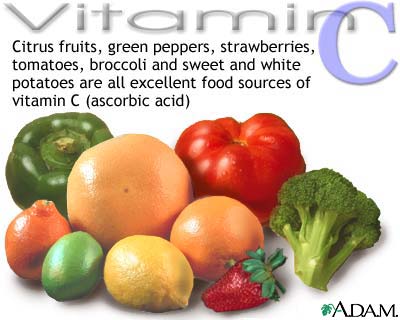
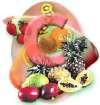 http://www.paulingtherapy.com/. Fenlason is somewhat unique in that he did not have Chelation or any other alternative therapy before adopting the high-dosage Pauling therapy. His “two day” reversal was after ten years under the care of modern cardiology.
http://www.paulingtherapy.com/. Fenlason is somewhat unique in that he did not have Chelation or any other alternative therapy before adopting the high-dosage Pauling therapy. His “two day” reversal was after ten years under the care of modern cardiology.

 We are meditating on peace, light or bliss while the express train is constantly moving. Our mind is calm and quiet in the vastness of Infinity, but there is a movement; a train is going endlessly toward the goal. We are envisioning a goal, and meditation is taking us there.
We are meditating on peace, light or bliss while the express train is constantly moving. Our mind is calm and quiet in the vastness of Infinity, but there is a movement; a train is going endlessly toward the goal. We are envisioning a goal, and meditation is taking us there.
 In contemplation everything is merged into one stream of consciousness. In our highest contemplation we feel that we are nothing but consciousness itself; we are one with the Absolute. But in our highest meditation there is a dynamic movement going on in our consciousness. We are fully aware of what is happening in the inner and the outer world, but we are not affected.
In contemplation everything is merged into one stream of consciousness. In our highest contemplation we feel that we are nothing but consciousness itself; we are one with the Absolute. But in our highest meditation there is a dynamic movement going on in our consciousness. We are fully aware of what is happening in the inner and the outer world, but we are not affected.
